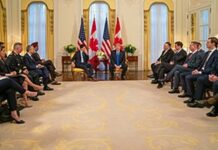
Factory activity in Asia weakened in September, with many different trade- reliant economies seeing a slump in export orders from a sign that escalating US-China tensions think about a toll on business confidence.
Rising raw material expenses are also squeezing profits for Asian manufacturers, raising questions over future investment and reinforcing views that global economic growth is shifting into lower gear.
Manufacturing activity weakened in Vietnam and Indonesia a few weeks ago, while Taiwan’s factories grew on the slowest pace in additional than 2 yrs on sluggish export orders, based on business surveys released on Monday.
Major economies like Japan and Mexico saw headline activity readings endure, but suffered declines in export orders, suggesting that increasing protectionism and concerns of slowing Chinese demand were weighing on Asia’s biggest economies.
Two manufacturing surveys in China on Sunday had pointed to rising regional risks. A private poll showed Chinese factory growth stalled after 15 months of expansion, while the gauge confirmed the sector was losing steam under the weight of shrinking export orders.
The first major readings on China for September suggest the world’s second-largest economy continues reduce momentum as domestic demand weakens and US tariffs bite, a compounding that is definitely more likely to prompt Beijing to roll out more growth-support measures in coming months.
“Global growth currently is cooling, which we expect is weighing on foreign sales of Chinese goods despite tariffs,” Capital Economics said inside a note to clients.
While rising trade protectionism is expected to handle the earth economy a comparatively modest blow to that year, risks will intensify in 2019 as tougher US tariffs start working and global borrowing costs rise.
As global firms have supply chains across Asia, many economies in the community are vulnerable to disruptions in trade and then for any slowdown in China – one of their biggest markets.
“Countries that saw their currencies slump could possibly be experiencing rising import costs. You can also find signs China’s slowdown along with the trade friction are starting to harm sentiment,” said Koji Kobayashi, senior economist at Mizuho Research Institute.
“It’d require time for businesses to relocate production from China to europe. So the original impact in the trade friction on Asian economies is negative.”
The U . s . and China imposed fresh tariffs on each other’s goods a couple weeks ago, showing no symptoms of backing down on the increasingly bitter trade dispute that is definitely likely hit global economic growth.
Similar surveys are expected from Europe and The usa later while in the day. Preliminary “flash” surveys suggest euro zone business growth continued to ease in September, leaving the United States because lone strong spot inside global economy.







